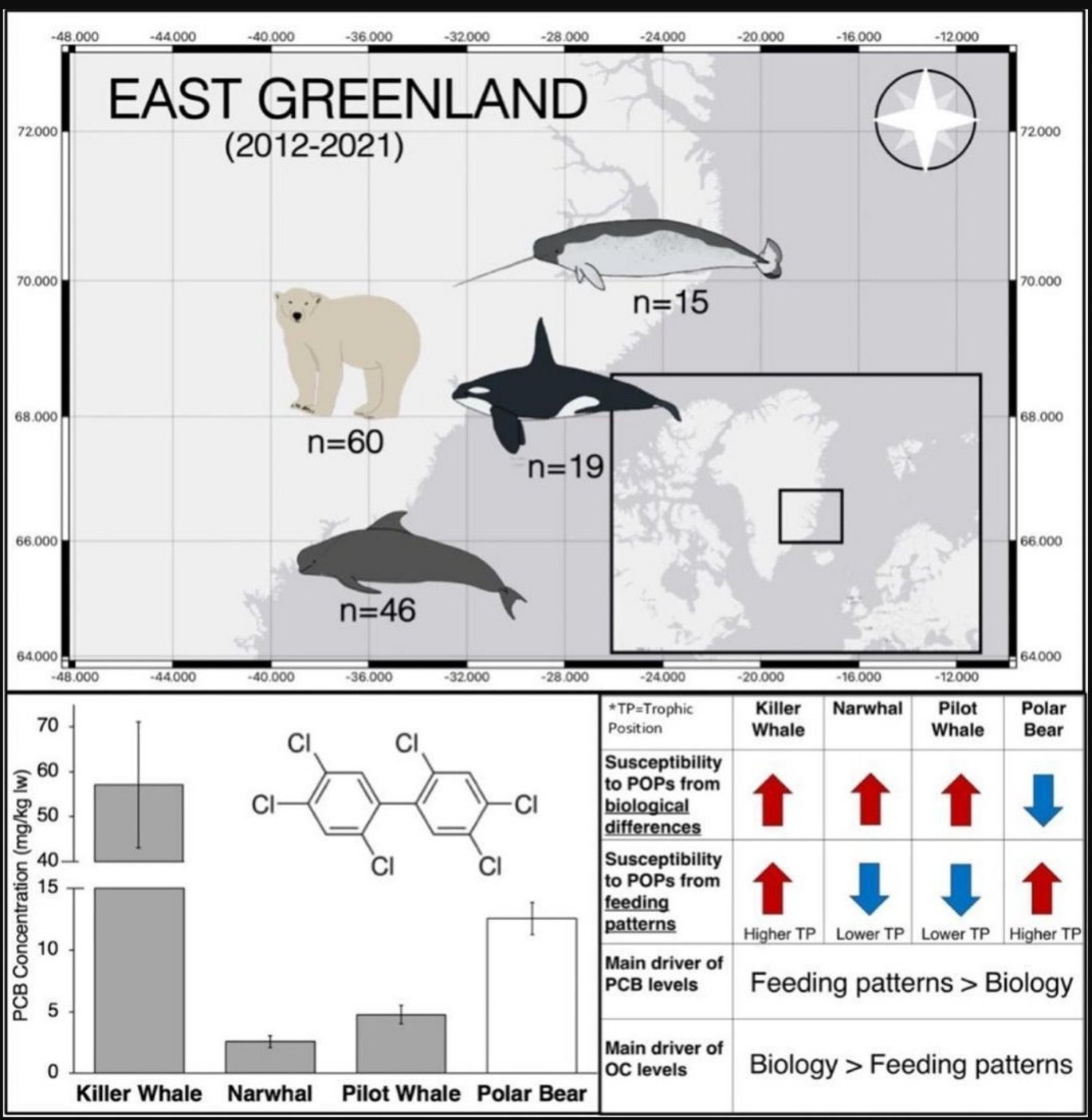Feeding and biological differences induce wide variation in legacy persistent organic pollutant concentrations among toothed whales and polar bear in the Arctic
New publication by Pedersen AF, Dietz R, Sonne C, Letcher RJ, Roos AM, Simon M et al.

Abstract:
Polar bear and toothed whales in the Arctic exhibit orders of magnitude differences in concentrations of legacy persistent organic pollutants (POPs), which may be attributed to comparisons made across regions and different time frames. These interspecific differences could also be influenced by variations in biological susceptibility, including differences in xenobiotic biotransformation between polar bear, from the order Carnivora, and toothed whales, from the order Artiodactyla, as well as ecological factors, such as variation in feeding patterns. Here, we analyzed samples from subsistence-harvested toothed whales and polar bear in East Greenland collected between 2012 and 2021 and quantitatively compared interspecific differences in blubber/adipose polychlorinated biphenyl (PCB) and organochlorine (OC) pesticide concentrations. We further determined fatty acid (FA) signatures as dietary tracers to evaluate how feeding patterns influence POP concentrations relative to the influence of biological differences between taxa. Killer whale exhibited the highest mean concentrations of ΣPCBs (57.0 ± 14.0 mg/kg lw), Σdichlorodiphentlytrichloroethanes (ΣDDTs; 55.7 ± 13.1 lw), and Σchlordanes (ΣCHLs; 23.1 ± 5.6 mg/kg lw), while polar bear showed the second highest concentrations for ΣPCBs (12.5 ± 1.3 mg/kg lw), but comparable or even lower levels of all OCs relative to narwhal and pilot whale. Linear models using FA patterns as explanatory variables for POP concentrations demonstrated that, for ΣPCBs, diet differences explained most of the variation. Conversely, biological differences explained more of the variation for most OCs, especially for DDT, for which polar bear showed the lowest concentrations despite feeding on similarly high trophic position prey as killer whale. This novel quantitative comparison confirms that significant differences in legacy POP concentrations occur among Arctic marine mammal predators. Furthermore, the drivers of these differences are contaminant-specific, with feeding patterns primarily influencing PCB concentrations, taxa-specific biological characteristics (e.g., in xenobiotic biotransformation capacity) affecting DDT concentrations, and both factors contributing to variation in other OCs.
